Art & Exhibitions
This Major Retrospective Traces Matisse’s Artistic Evolution—And His Travels
The blockbuster exhibition features more than 70 works charting the evolution of one of art history's most influential figures.
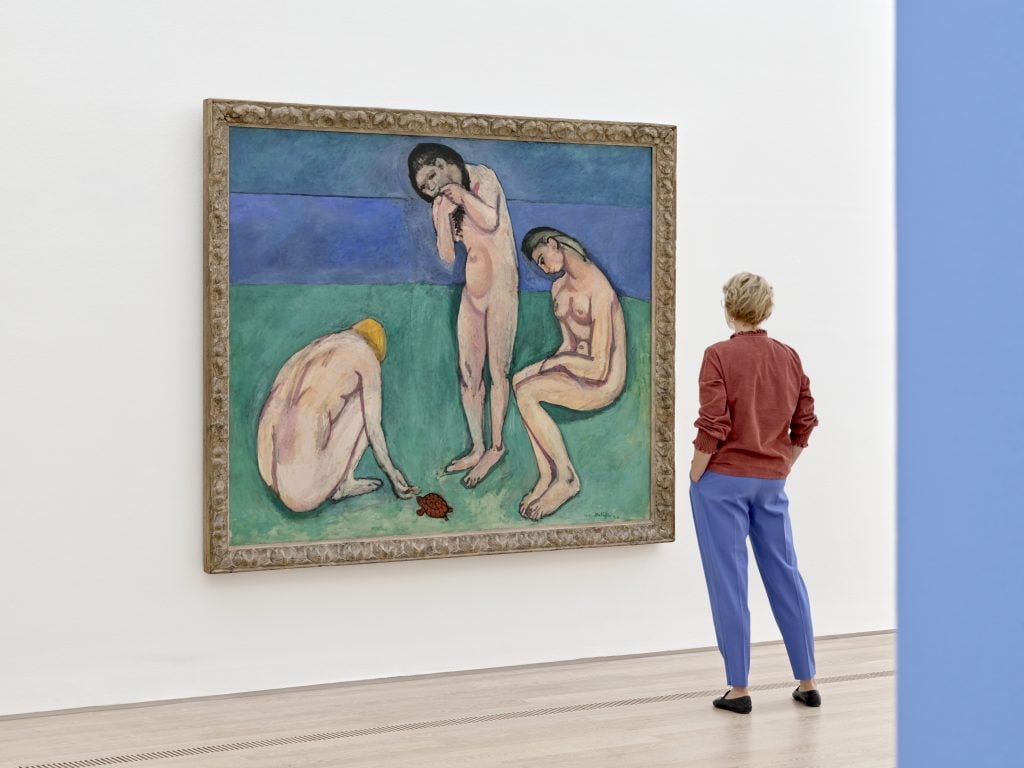
The blockbuster exhibition features more than 70 works charting the evolution of one of art history's most influential figures.

Vivienne Chow

As the art world is getting ready for the back-to-back two-week frenzy of Frieze London and Art Basel Paris, there’s an equally important event in Switzerland. Fondation Beyeler in Riehen near Basel has recently opened a major exhibition of Henri Matisse. Billed as the first retrospective of the French master in Switzerland and the German-speaking world in nearly two decades, unveiling such a blockbuster show ahead of Europe’s fair season seem to serve as a reminder of the importance of this tranquil Swiss town, which was the birthplace of one of the world’s most powerful art fairs today.
Titled “Invitation to the Voyage,” the show curated by Raphaël Bouvier, senior curator at Fondation Beyeler, features more than 70 works including those from the collection of the Swiss museum as well as those on loan from some of the world’s most esteemed museums, such as the Museum of Modern Art in New York, Centre Pompidou in Paris, and an international array of private collections. The works on display span from 1900 to the 1950s, tracing the French artist’s career development as he became one of modern art’s most influential figures.
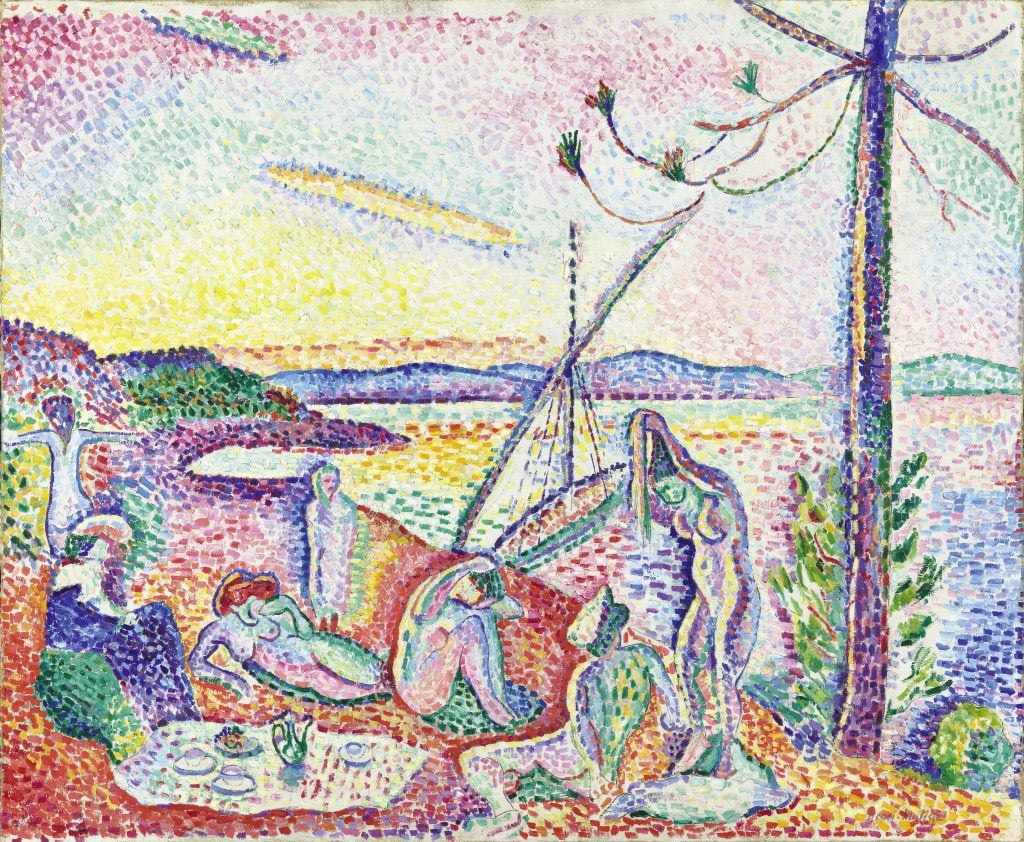
Henri Matisse, Luxe, calme et volupté (1904). Musée national d’art moderne, Centre Pompidou, Paris. © Succession H. Matisse / 2024, ProLitteris, Zurich. Photo: © RMN-Grand Palais (musée d‘Orsay) / Hervé Lewandowski.
The exhibition’s title was drawn from the poem of the same name by French poet Charles Baudelaire (1821-1867). The themes of serenity, luxury, and pleasure explored in the poem are often said to permeate Matisse’s oeuvre, as illustrated by this repeated verse, “Là, tout n’est qu’ordre et beauté, Luxe, calme et volupté.” (“There, there’s only order, beauty: abundant, calm, voluptuous.”) This also serves as the most obvious reference in his 1904 painting Luxe, Calme et Volupté, on display in this show, demonstrated by its rich color palette as well as the depiction of light and landscapes in the mood of pleasure.
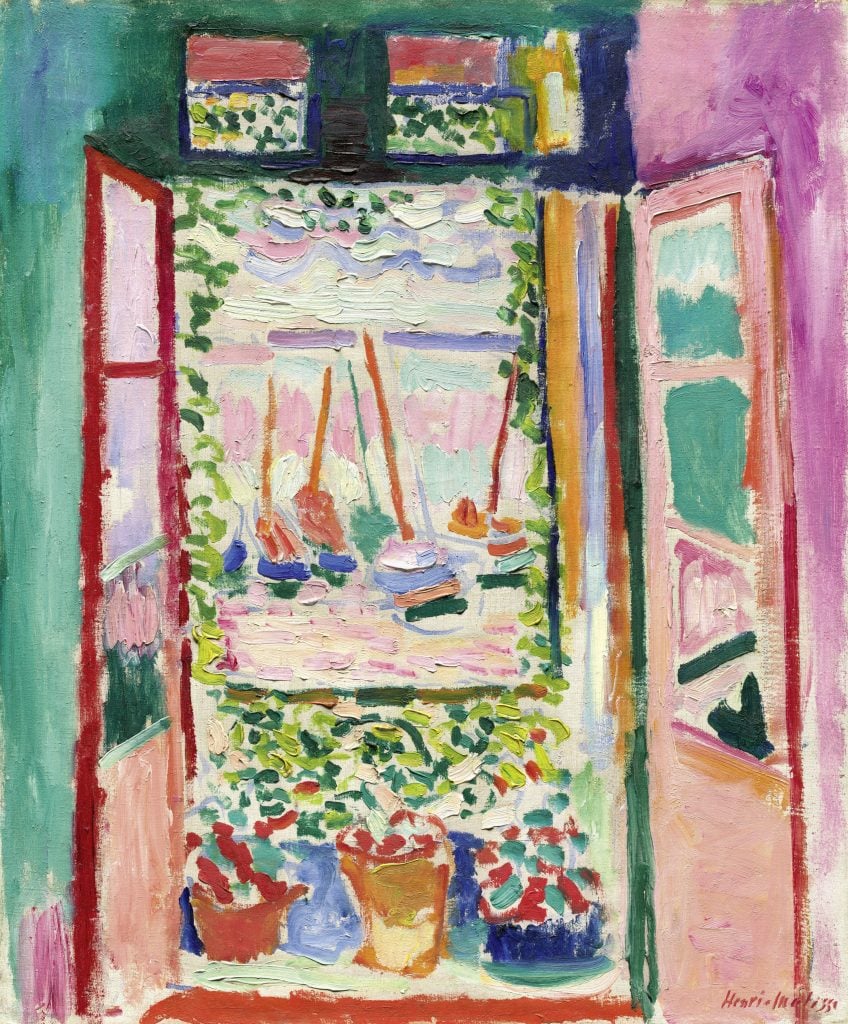
Henri Matisse, La fenêtre ouverte, Collioure (The Open Window) (1905). © Succession H. Matisse / 2024, ProLitteris, Zurich Photo: Courtesy National Gallery of Art, Washington, DC.
This serves as a conceptual springboard for the exhibition, which delves into the artist’s inner vision and artistic evolution through works fused with the artist’s fascination with light and perspectives of the external world spanning from different eras. The selection also reflects Matisse’s expansive journeys over the course of time. His travels—from his native northern France to the Mediterranean South, through Italy, Spain, North Africa, and then the United States and the South Pacific— played a pivotal role in his art. Those experiences reflect the artist’s quest for literal new horizons, and for a constant reinvention of his personal artistic language. From his early Fauvist works to late paper cut-outs, Matisse absorbed different cultures, traditions, and landscapes that are evident in his roving styles. An open window is a recurring motif in the works on display, which invite viewers to contemplate the oscillation between the interior and the exterior, and the conflicting desire to be both here and afar.
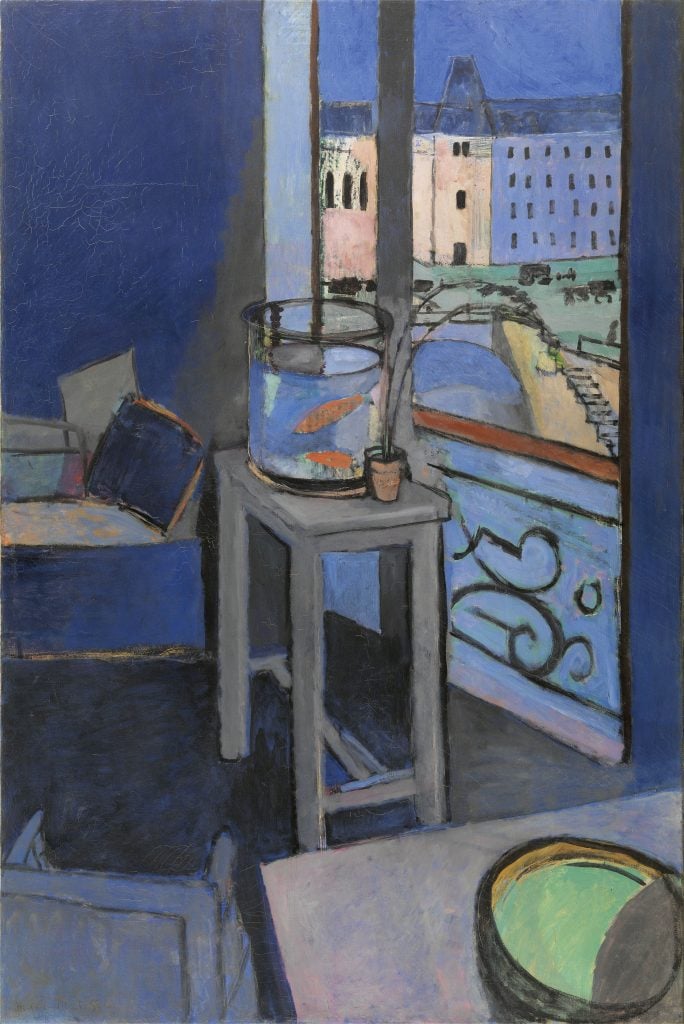
Henri Matisse, Intérieur, bocal de poissons rouges (Interior with a Goldfish Bowl) (1914). © Succession H. Matisse / 2024, ProLitteris, Zurich. Photo: © Centre Pompidou, MNAM-CCI, Dist. RMN-Grand Palais / Philippe Migeatigeat.
The journey begins with Matisse’s early works around the turn of the 20th century. Paintings including La Desserte (The Dinner Table) (1896/1897), Luxe, calme et volupté (1904), and La fenêtre ouverte (The Open Window, Collioure) (1905) chart the artist’s transition from traditional figuration to Fauvism with an expressive approach to colors, simplification of forms, and distinctive brushstrokes.
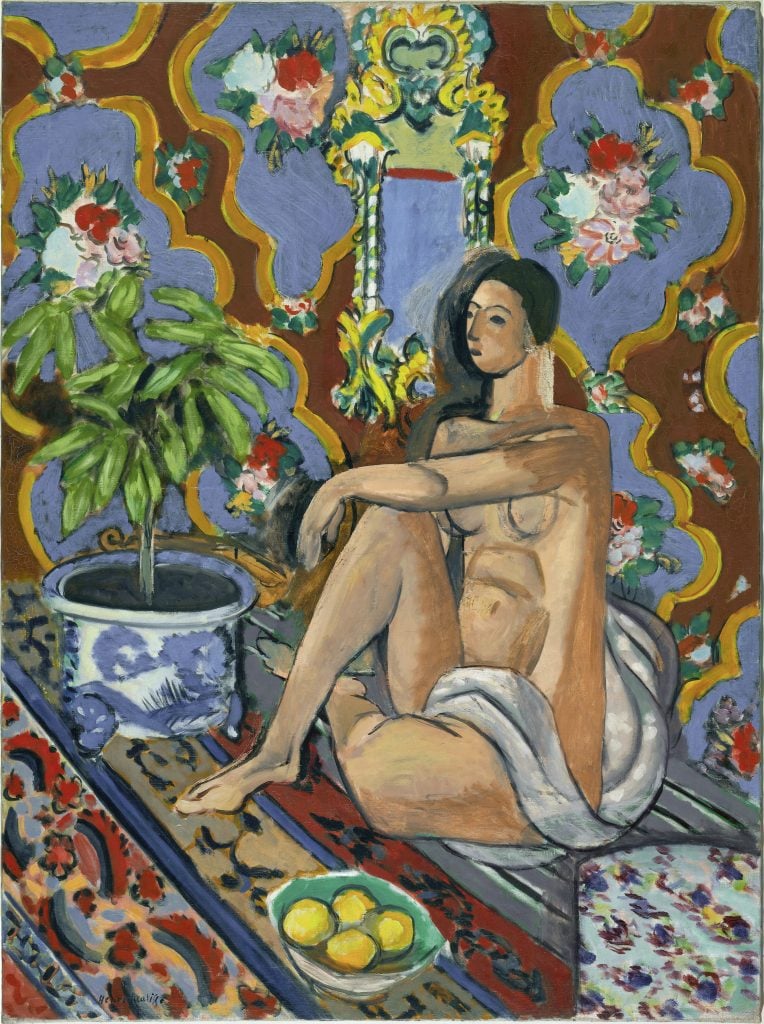
Henri Matisse, Figure décorative sur fond ornemental (Decorative Figure on an Ornamental Ground) (1925/26). © Succession H. Matisse / 2024, ProLitteris, Zurich. Photo: © Centre Pompidou, MNAM-CCI, Dist. RMN-Grand Palais / Philippe Migeat.
These influences lingered in the subsequent decades as Matisse explored and refined his artistic language further, particularly the pictorial composition, depiction of object and light in works such as Poissons rouges et sculpture (Goldfish and Sculpture) (1912) and Intérior, Bocal de Poissons Rouges (Interior with a Goldfish Bowl) (1914). There is a sense of heightened sensuality in his Nice period paintings of the 1920s, as in Figure décorative sur fond ornemental (Decorative Figure on an Ornamental Ground) (1925/1926), which displays his mastery of light and texture.
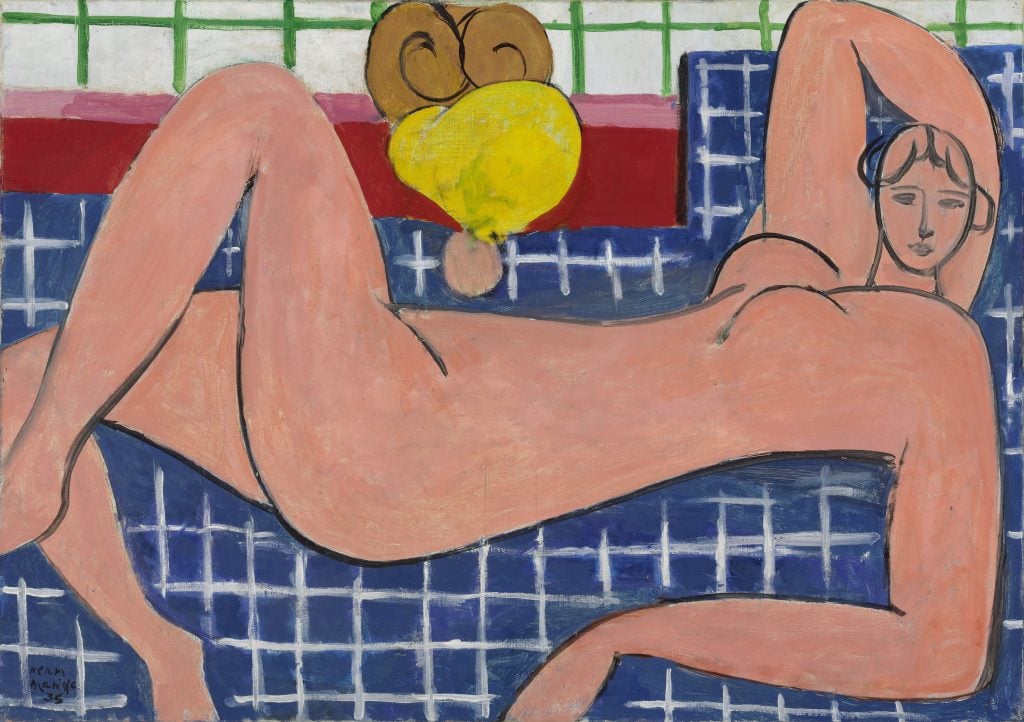
Henri Matisse, Grand nu couché (Nu rose) [Large Reclining Nude (The Pink Nude)] (1935). © Succession H. Matisse / 2024, ProLitteris, Zurich. Photo: Mitro Hood, courtesy of the Baltimore Museum of Art.
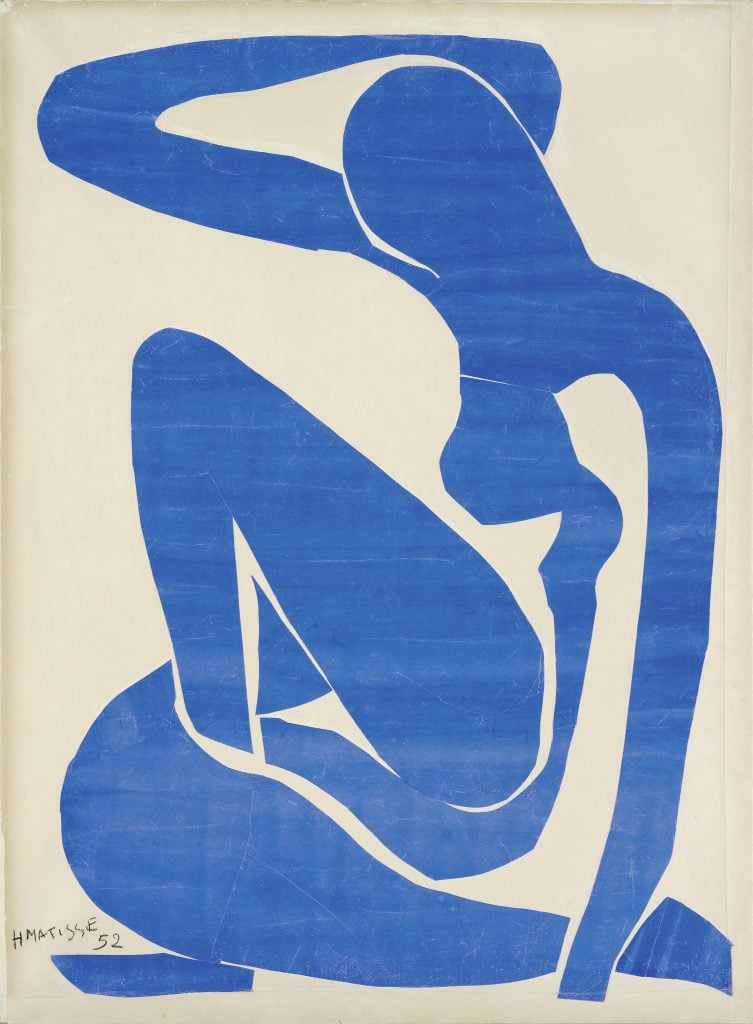
Henri Matisse, Nu bleu I (Blue Nude I) (1952). Fondation Beyeler, Riehen/Basel, Beyeler Collection. © Succession H. Matisse / 2024, ProLitteris, Zurich. Photo: Robert Bayer.
The exhibition also focuses on Matisse’s creative process, which is explored in a multimedia space showcasing historical photographs of his travels in animated wall panels. The presentation also offers a glimpse into the artist’s studios, intomaye spaces held closest to the artist, and perhaps a physical manifestation of his inner world. This exhibition is one important rendezvous for fans and art lovers alike.
“Matisse—Invitation to the Voyage” runs through January 26, 2025, at Fondation Beyeler.